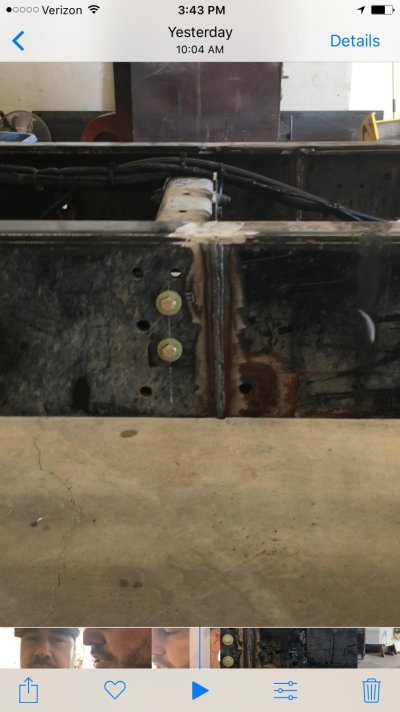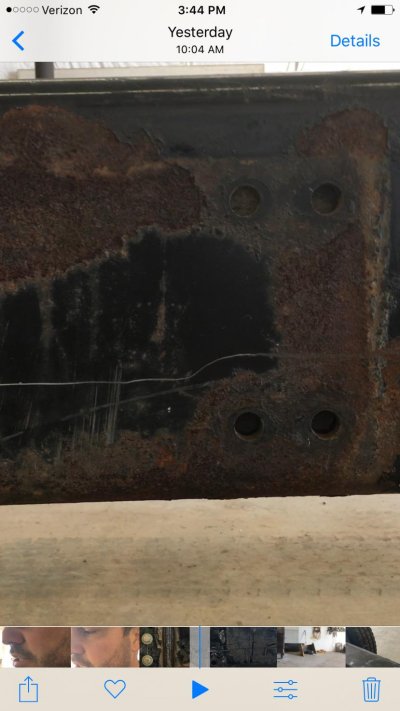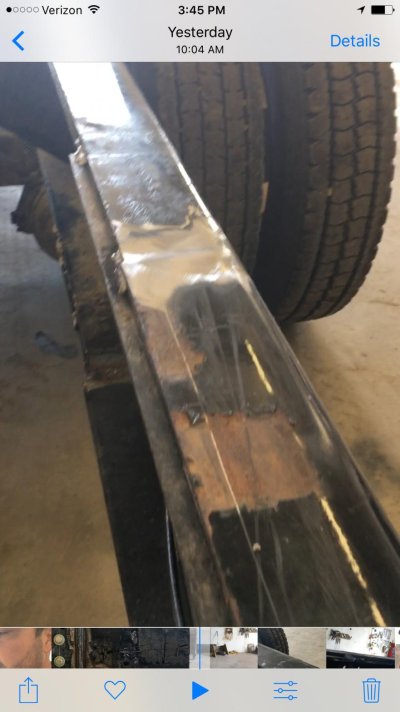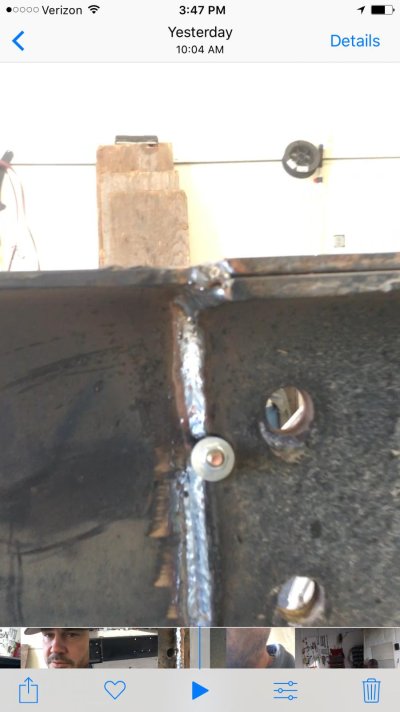Rmtcinc
New Member
First time poster here.
Where do I begin....
A little history of my experience with frame stretching. I had a truck builder working out of my shop for 6 1/2 years. Watched him stretch at least 10 frames a year. So I don't confuse anyone, he was running his own biz out of my shop while I ran my biz ( tree service ). He retired last summer.
So fast forward to present time. I bought a truck, double framed that I needed stretched. It was difficult to find anyone who would/could do a stretch job. Well I found one and hired them to do the job. Well I got the truck back today and I can't believe what I'm looking at. Now maybe what they did is acceptable but based on my experiences I highly doubt it. I will explain what they did and you tell me what you think. I needed a little over 7ft of frame added, so the builder added 3 1/2ft in front of the drivers. He used "used" rusty frame material and used outside frame for the inside frame if that makes sense. Then he added 4ft behind the drivers and only went single frame. Now let me tell you , this truck will have a rear mounted log loader on it that weighs 6000 pounds. I have the truck for the weekend so I can get hydraulic parts for the log loader mounted on it and will be taking it back to the truck builder on Monday. I already know I'm gonna tell them to cut that single frame off and do it right. When I hired them I never agreed to let them do it this way. I already know I hired the wrong company and that's my fault but I really would like your advice on how I should handle this, or if they haven't done anything wrong, tell me. Thanks for reading!
Where do I begin....
A little history of my experience with frame stretching. I had a truck builder working out of my shop for 6 1/2 years. Watched him stretch at least 10 frames a year. So I don't confuse anyone, he was running his own biz out of my shop while I ran my biz ( tree service ). He retired last summer.
So fast forward to present time. I bought a truck, double framed that I needed stretched. It was difficult to find anyone who would/could do a stretch job. Well I found one and hired them to do the job. Well I got the truck back today and I can't believe what I'm looking at. Now maybe what they did is acceptable but based on my experiences I highly doubt it. I will explain what they did and you tell me what you think. I needed a little over 7ft of frame added, so the builder added 3 1/2ft in front of the drivers. He used "used" rusty frame material and used outside frame for the inside frame if that makes sense. Then he added 4ft behind the drivers and only went single frame. Now let me tell you , this truck will have a rear mounted log loader on it that weighs 6000 pounds. I have the truck for the weekend so I can get hydraulic parts for the log loader mounted on it and will be taking it back to the truck builder on Monday. I already know I'm gonna tell them to cut that single frame off and do it right. When I hired them I never agreed to let them do it this way. I already know I hired the wrong company and that's my fault but I really would like your advice on how I should handle this, or if they haven't done anything wrong, tell me. Thanks for reading!





